Best Drones for Crop Monitoring: Top 7 Picks in 2024
Agricultural technology has come a long way, and one of the most effective advancements is the use of the best drones for crop monitoring. These tools offer farmers precise, real-time data that allows for better management of crops, improved yields, and more efficient resource use. In 2024, there are more drone options than ever before, each offering a unique set of features tailored to meet the diverse needs of modern farming. This comprehensive guide will help you navigate through the top best drones for crop monitoring, highlighting their features, benefits, and how they can revolutionize your farming practices.
1. Veeniix Quadcopter Drone
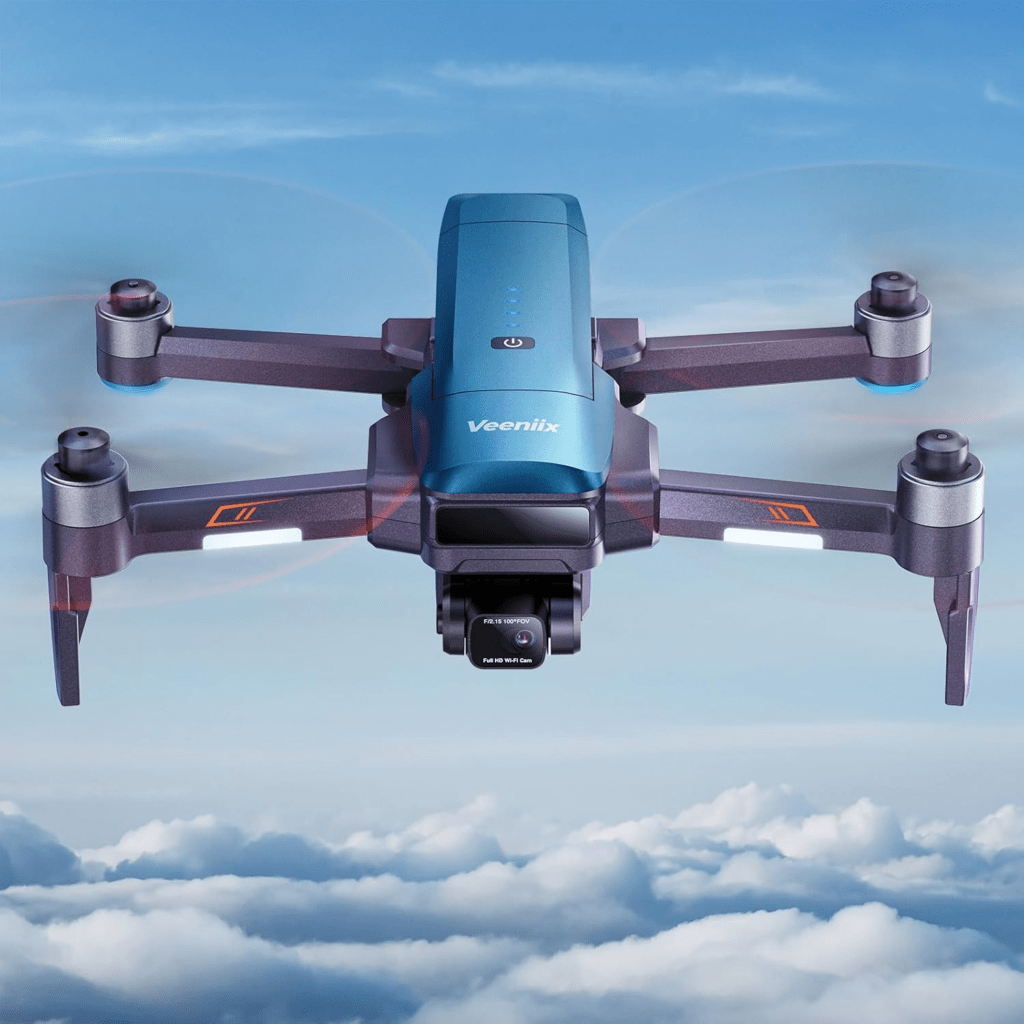
Features and Benefits
The Veeniix Quadcopter Drone is among the best drones for crop monitoring due to its high-resolution imaging capabilities and extended flight time. With this drone, you can cover vast agricultural areas in a short amount of time. Its advanced imaging sensors capture precise details that allow you to monitor crop health, spot irrigation issues, or detect pest infestations early on.
Another great feature of the Veeniix Quadcopter is its GPS integration. This allows you to set pre-programmed flight routes, ensuring your entire field is covered efficiently. The drone is designed to withstand different weather conditions, making it reliable for year-round use. Even novice drone operators will appreciate its user-friendly controls, which make managing large plots of farmland straightforward and effective.
Buy on Amazon2. Holy Stone Lightweight Drone
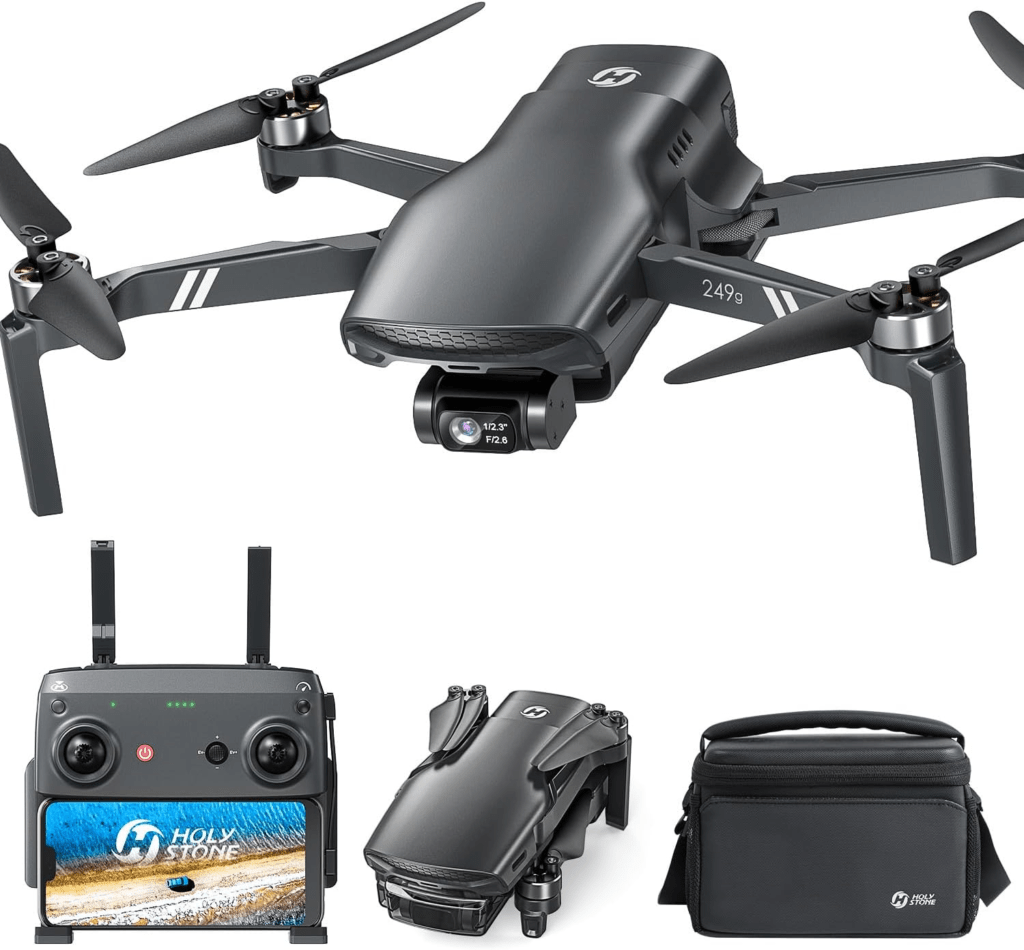
Features and Benefits
Another excellent option in the realm of the best drones for crop monitoring is the Holy Stone Lightweight Drone. This drone is particularly suited for farmers who need something easy to operate but powerful enough to handle regular crop monitoring. Despite its lightweight frame, this drone is equipped with brushless motors, ensuring stable and quiet operation, even in windy conditions.
The Holy Stone drone also features long-range transmission and extended battery life, allowing it to cover significant areas before requiring a recharge. This feature is especially useful for large farms or multiple plots. Its high-definition camera captures crisp images and videos that are essential for diagnosing crop health issues, such as pest damage, nutrient deficiencies, or signs of water stress.
Buy on Amazon3. Bwine F20 Drone
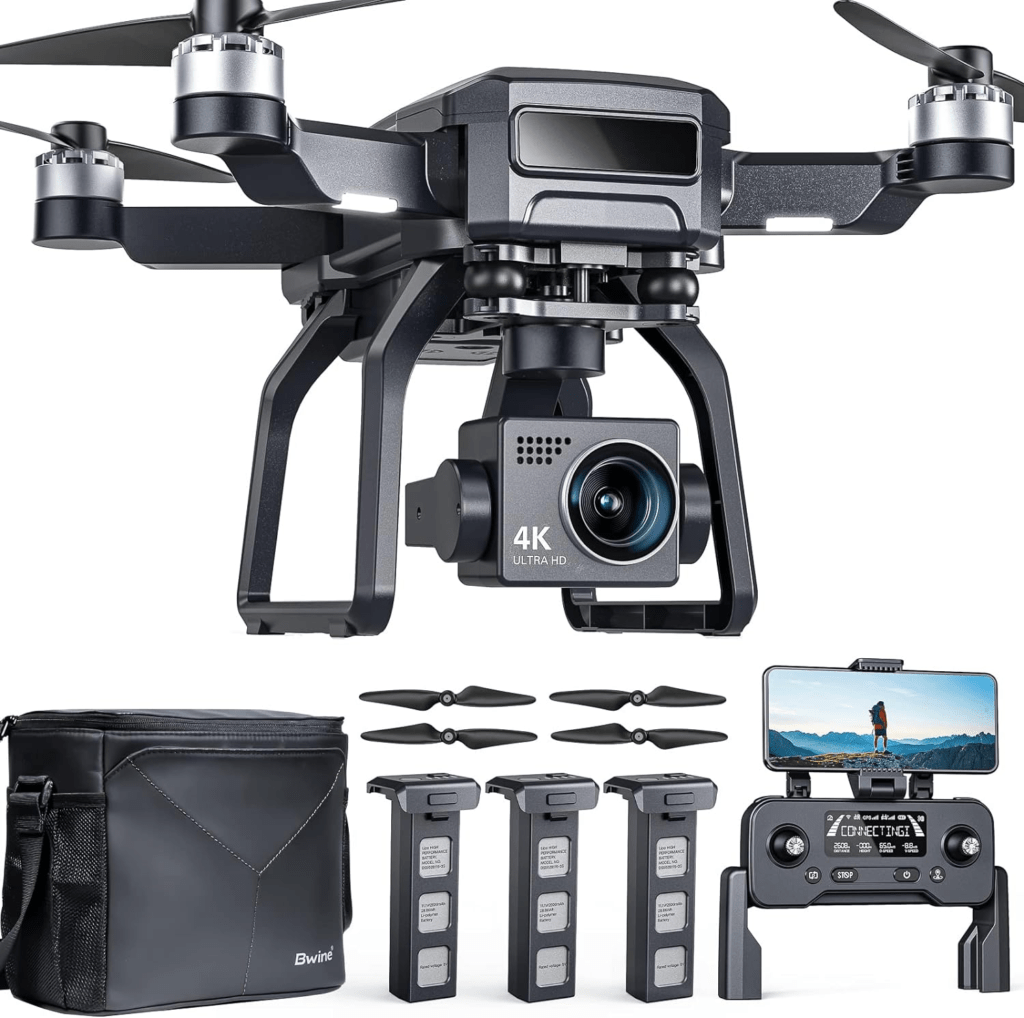
Features and Benefits
When discussing the best drones for crop monitoring, the Bwine F20 Drone stands out with its dual battery system and robust design. The extended flight time offered by the dual batteries is crucial for large-scale farming operations that require continuous monitoring over vast areas. The drone’s durable design makes it reliable for long-term use, even in challenging weather conditions.
The Bwine F20 Drone also includes GPS-assisted flight capabilities, allowing for automated flight paths that cover your entire field without manual control. This feature ensures thorough data collection, providing farmers with a complete picture of crop health. Its brushless motors enhance the drone’s longevity, and its quiet operation minimizes disturbance, making it an ideal tool for consistent agricultural monitoring.
Buy on Amazon4. Pro LIMITLESS 4K UHD Drone
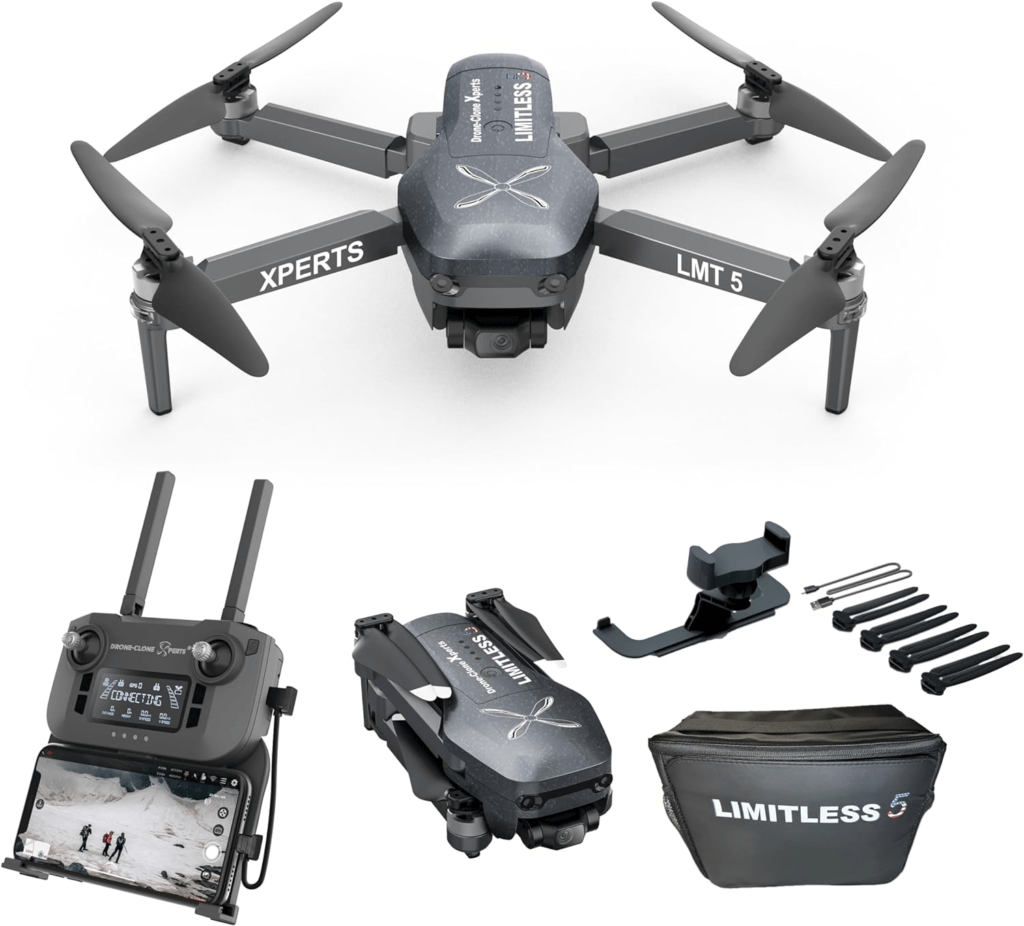
Features and Benefits
The Pro LIMITLESS 4K UHD Drone is one of the best drones for crop monitoring for farmers seeking high-resolution imagery. Equipped with a 4K UHD camera, this drone allows you to capture detailed visuals of your fields, which is essential for assessing crop health and diagnosing issues such as disease, pests, or irrigation inefficiencies. This level of precision can help farmers make informed decisions that lead to better crop yields and resource optimization.
The Pro LIMITLESS drone also offers intelligent flight modes that simplify complex operations. For example, automated crop scanning and return-to-home features make it easier for farmers to focus on analyzing the data instead of managing the drone. Its stable flight and comprehensive coverage make it an excellent tool for large-scale farming operations that need accurate, real-time data.
Buy on Amazon5. DJI Mavic Air 2
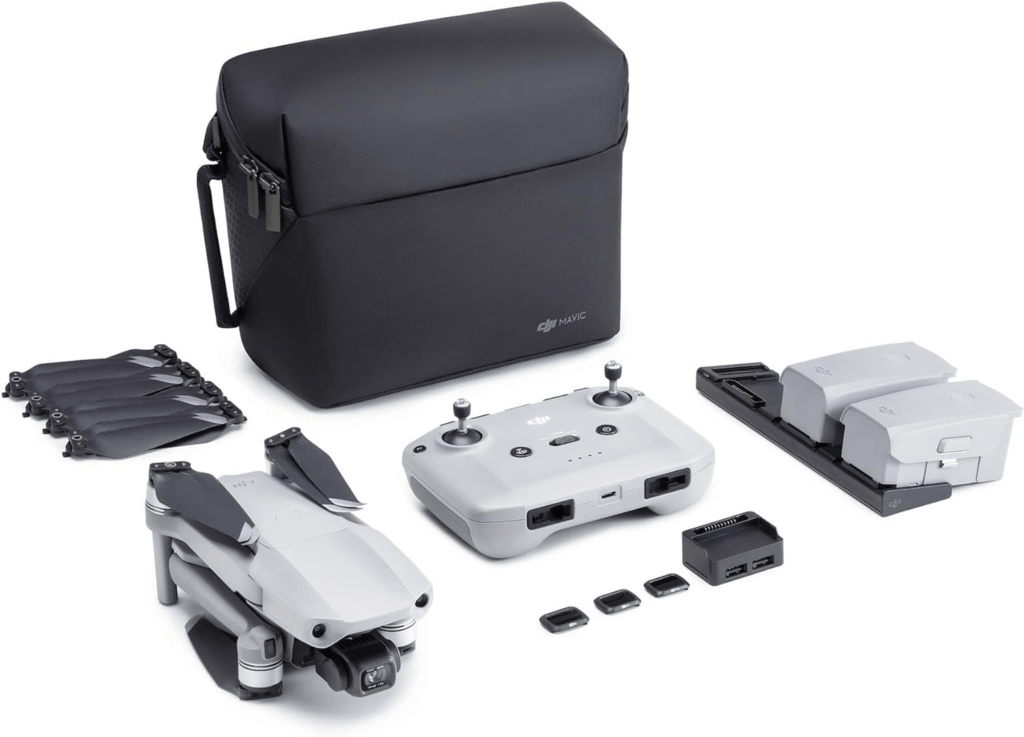
Features and Benefits
The DJI Mavic Air 2 is often considered one of the best drones for crop monitoring due to its advanced features and ease of use. This drone’s obstacle avoidance technology makes it ideal for farms with varied terrain, structures, or other obstructions. The drone autonomously avoids obstacles while collecting data, ensuring comprehensive coverage without risk of collision.
With a flight time of up to 34 minutes, the Mavic Air 2 can cover large areas efficiently. The drone’s 48MP camera ensures that even small details are captured, giving farmers the information they need to assess crop health and make timely interventions. Intelligent flight modes, such as focus tracking and point of interest, allow for precise monitoring of specific areas, reducing the manual labor typically associated with crop monitoring.
Buy on Amazon6. DJI Mini 2
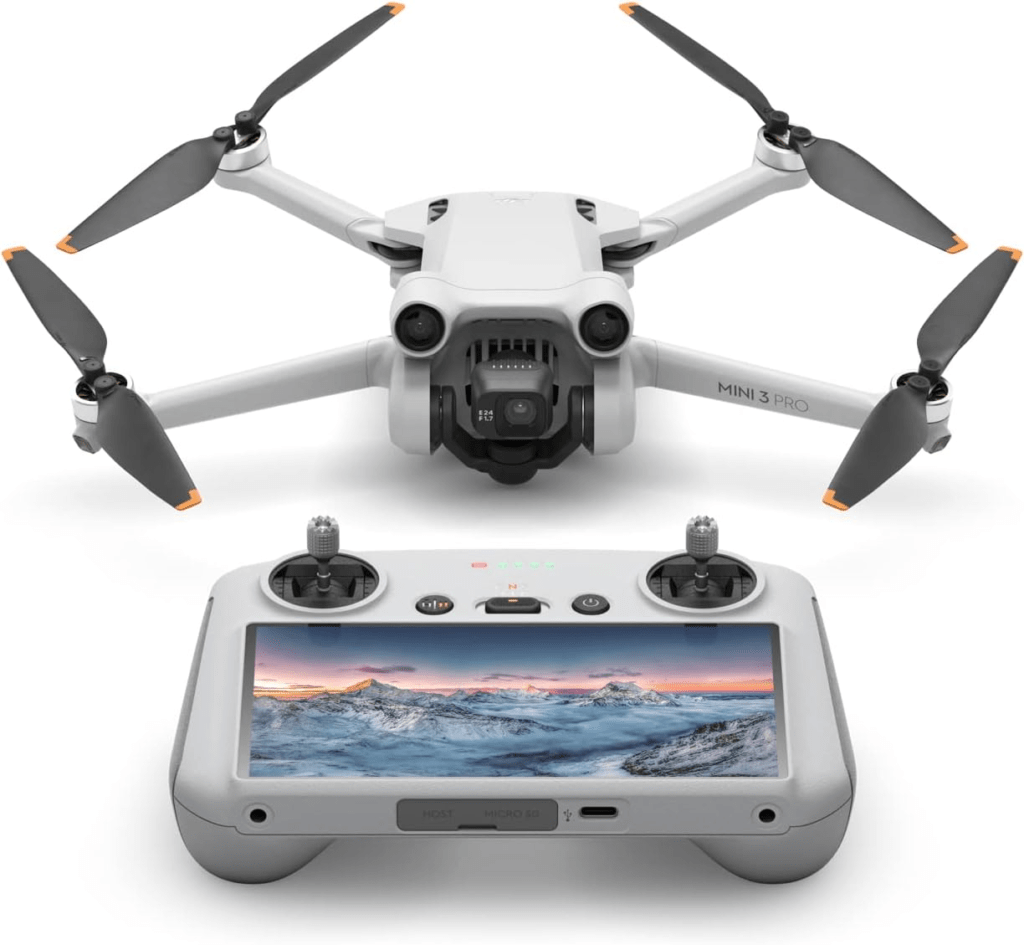
Features and Benefits
For farmers just getting started with drone technology, the DJI Mini 2 is a fantastic entry-level option among the best drones for crop monitoring. This drone is lightweight, portable, and doesn’t require registration in many regions, making it accessible for small-scale farms or hobby farmers. Despite its small size, the Mini 2 offers impressive features that make it a valuable tool for monitoring crops.
The DJI Mini 2 is equipped with a 12MP camera that captures clear images and video, allowing you to detect potential issues such as uneven crop growth, pest infestations, or poor irrigation. The drone’s long transmission range and reliable GPS positioning ensure you can cover large areas without losing connection, making it a great option for those looking to monitor multiple plots or larger fields.
Buy on Amazon7. Ruko F11GIM Drone
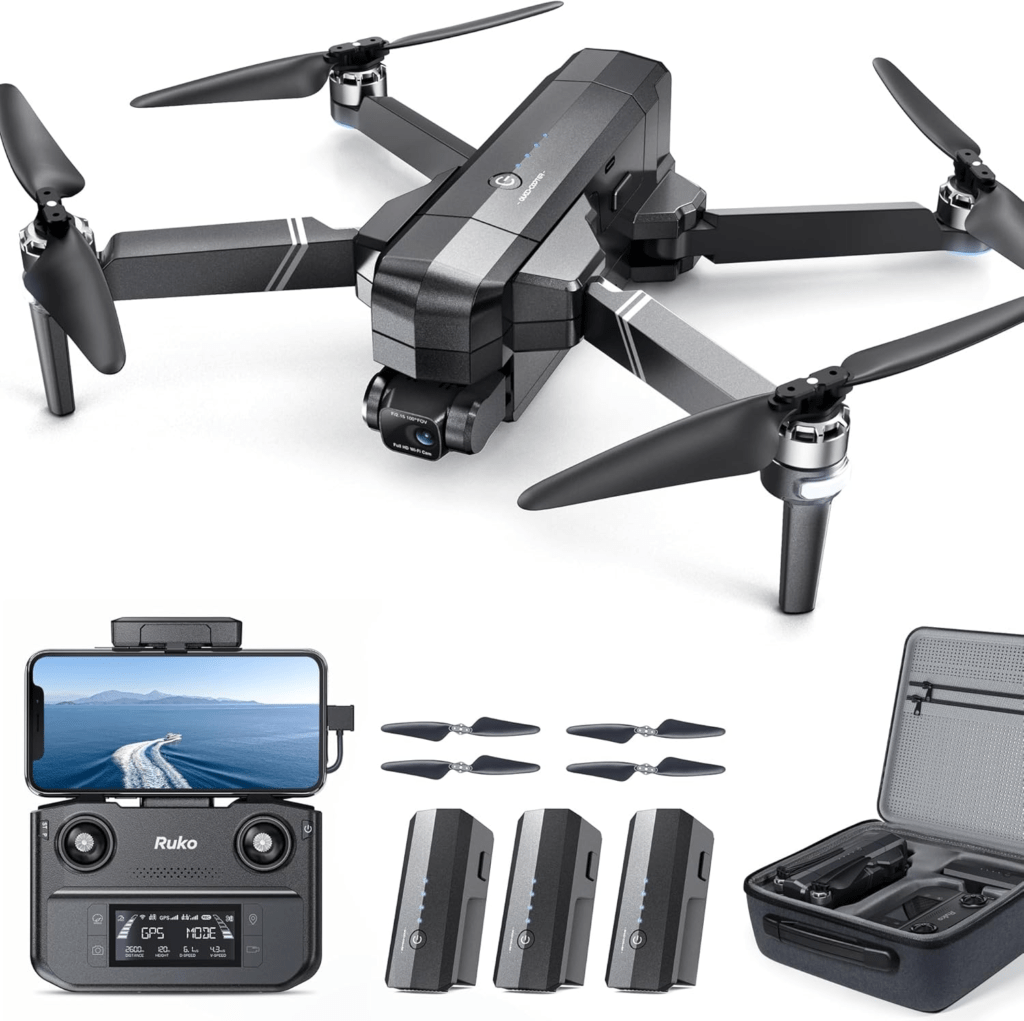
Features and Benefits
The Ruko F11GIM Drone completes our list of the best drones for crop monitoring with its combination of durability, high-resolution imaging, and ease of use. This drone is built for farmers who need a reliable, long-term solution for regular crop monitoring. With brushless motors and a long flight time, the Ruko F11GIM is well-suited to cover large fields without requiring frequent recharging.
This drone is equipped with a 4K camera that delivers sharp, detailed images of your crops. The data collected can be used to make timely decisions regarding irrigation, fertilization, or pest control. The Ruko F11GIM’s GPS-assisted flight and intelligent flight modes make it easy to program automated routes, ensuring comprehensive coverage without the need for manual control.
Buy on AmazonWhy Drones Are Essential for Crop Monitoring
Drones have revolutionized the agricultural industry, particularly when it comes to crop monitoring. The best drones for crop monitoring provide real-time data that can be used to make informed decisions about irrigation, fertilization, and pest control. Here are several reasons why drones are indispensable for modern farmers:
- Efficiency: Traditional methods of crop monitoring are time-consuming and labor-intensive. With drones, you can cover vast areas of land in a fraction of the time, allowing for more frequent monitoring and quicker decision-making.
- Precision: Drones equipped with high-resolution cameras and sensors can capture detailed data that is essential for accurate crop health assessments. This level of precision allows farmers to address issues before they become significant problems, such as identifying water stress, nutrient deficiencies, or pest infestations early.
- Cost-Effective: While the initial investment in a drone may seem steep, the long-term benefits far outweigh the cost. Drones help farmers reduce waste, optimize resource use, and increase crop yields, all of which can lead to significant financial savings.
- Sustainability: By providing real-time data on crop health, drones enable farmers to make more informed decisions about resource use. This can lead to more sustainable farming practices, such as reducing water usage, applying fertilizers more efficiently, and minimizing the need for chemical pesticides.
- Ease of Use: The best drones for crop monitoring are designed to be user-friendly, with intuitive controls and automated flight modes. This means that even farmers with no prior experience can quickly learn to operate the drone and start collecting valuable data.
How to Choose the Best Drones for Crop Monitoring
When choosing the best drones for crop monitoring, there are several factors to consider:
- Flight Time: A drone with a long flight time allows you to cover more ground in a single session, which is crucial for large farms.
- Camera Quality: High-resolution cameras are essential for capturing detailed images and videos of your crops. The better the camera quality, the more precise your data will be.
- Durability: Look for drones that are built to withstand various weather conditions. This ensures that you can monitor your crops year-round, regardless of the climate.
- Ease of Use: The best drones for crop monitoring should be easy to operate, even for beginners. Look for drones with intuitive controls and automated flight modes, which make crop monitoring more efficient and less stressful.
- GPS and Mapping: Drones with GPS capabilities allow you to pre-program flight routes, ensuring that your entire field is covered efficiently. This feature is particularly useful for large farms or farms with irregularly shaped fields.
- Range: The longer the transmission range, the more area you can cover without losing connection. This is especially important for farmers who need to monitor large or multiple plots.
FAQs
Q: How often should I use drones for crop monitoring?
A: The frequency of using the best drones for crop monitoring depends on several factors, including the type of crops you are growing, the size of your farm, and specific challenges such as pest control or soil health. For crops that are more sensitive to environmental conditions, such as fruits or vegetables, you may need to monitor them more frequently, especially during key growth phases like flowering, fruiting, or after major weather events.
In general, many farmers find that bi-weekly flights using the best drones for crop monitoring provide adequate data to track crop health and identify issues early. However, during critical growth stages, weekly flights may be necessary to ensure you have real-time data. Drones can quickly gather detailed information, allowing you to address potential problems, such as water stress or nutrient deficiencies before they negatively impact crop yield. Additionally, factors like changing weather conditions or pest outbreaks may also require more frequent use of the best drones for crop monitoring to ensure timely interventions.
For larger farms, you might integrate satellite imagery with drone data to reduce the need for constant flights. In these cases, the best drones for crop monitoring can be used for targeted, high-resolution inspections in specific areas where satellite data indicates potential issues.
Q: Are drones difficult to operate for crop monitoring?
A: Most of the best drones for crop monitoring are designed with ease of use in mind. They come equipped with features like automated flight modes, GPS integration, and intuitive controls, making them accessible even for beginners. Many drones offer “auto takeoff” and “return to home” functionalities, so you won’t have to worry about complex manual controls. These features make it easier to gather accurate data without requiring extensive training.
The best drones for crop monitoring also have preset flight paths for agricultural tasks, such as grid mapping, which ensures your entire field is scanned efficiently. These drones can be programmed to fly a specific route and automatically capture data, reducing the time and effort needed to monitor large areas of farmland. Even if you have no prior experience with drones, manufacturers provide comprehensive tutorials, mobile apps, and customer support to help you get started.
After a few practice flights, most users of the best drones for crop monitoring find that they can confidently operate their drones and gather the necessary data with minimal hassle. Advanced drones even offer live data feeds, which make it easy to track your flight and adjust the path if needed. While practice is always helpful, many farmers find that the technology is intuitive and easy to master.
Q: What kind of data can drones collect for crop monitoring?
A: The best drones for crop monitoring are capable of collecting a wide variety of data that can transform how you manage your crops. Most drones are equipped with high-resolution cameras that capture detailed images of your fields. These images help you identify issues like pest damage, nutrient deficiencies, or water stress, which can be difficult to detect from ground level. By capturing aerial views, you get a comprehensive understanding of your entire field’s condition.
In addition to visual data, the best drones for crop monitoring can be equipped with thermal or multispectral sensors. Thermal sensors help detect variations in soil moisture, which can be used to optimize irrigation. Multispectral sensors capture data beyond what the human eye can see, making it easier to assess plant health at a deeper level by detecting chlorophyll content and overall vigor. This advanced data helps you spot early signs of disease or stress before visible symptoms appear.
Drones also generate geospatial data, allowing you to map your fields with incredible precision. The best drones for crop monitoring can create 3D models and elevation maps, which help plan irrigation systems or identify areas prone to erosion. By combining all these data points, drones offer a powerful tool for making data-driven decisions that optimize crop yield and reduce resource waste.
Q: Can drones help with pest management?
A: Absolutely, the best drones for crop monitoring are excellent tools for pest management. Drones equipped with high-resolution cameras and multispectral sensors can detect early signs of pest infestations that may not be visible to the naked eye from the ground. By flying over large areas quickly, drones allow farmers to monitor crop health frequently and catch infestations before they spread.
Using the best drones for crop monitoring, you can take targeted action by identifying which sections of your field are most affected. This helps in reducing the need for broad pesticide application, which can save money and minimize environmental impact. Some advanced drones even can release beneficial insects or targeted pesticides to address infestations directly, providing an eco-friendly approach to pest control.
Frequent use of the best drones for crop monitoring allows for continuous surveillance, making it easier to manage and respond to pest outbreaks in real time. Early detection can significantly reduce crop loss, as drones allow you to act before pests cause significant damage. With the precise data gathered by drones, you can also track the effectiveness of your pest control methods, ensuring you are using the right approach for each situation.
Q: How much do the best drones for crop monitoring cost?
A: The cost of the best drones for crop monitoring can vary widely based on their features and capabilities. Entry-level drones designed for smaller farms or basic crop monitoring can start at a few hundred dollars. These drones typically come with high-resolution cameras and basic automated flight functions, suitable for small-scale operations or farmers just getting started with drone technology.
Mid-range drones, which offer longer flight times, more advanced sensors, and better image quality, usually cost between $1,000 and $2,000. These drones are great for larger farms that need more comprehensive data or frequent monitoring. The best drones for crop monitoring in this range typically include GPS integration, intelligent flight modes, and high-quality cameras that make it easier to assess crop health over large areas.
High-end drones, which can cost several thousand dollars, are equipped with the most advanced features, including multispectral or thermal sensors, long-range transmission, and advanced software for data analysis. These drones are ideal for large-scale farms or operations that require precise, real-time data for decision-making. While the initial investment for these best drones for crop monitoring may seem high, the return on investment is significant. By optimizing resource use, improving crop yields, and reducing labor costs, drones quickly pay for themselves in improved efficiency and productivity.
Conclusion
Investing in one of the best drones for crop monitoring can transform your farming operations. These drones offer a wide range of features that make monitoring your crops easier, faster, and more precise. Whether you’re looking for high-resolution imaging, long flight times, or ease of use, the drones listed in this guide have something to offer for every type of farm.
For more information on optimizing your farm operations, consider reading related articles on our site, such as the best greenhouses for large farms or sustainable farming techniques. Additionally, you can explore the latest agricultural technology developments on the official DJI website or check out resources from the USDA.
By choosing the right drone, you can take your crop monitoring efforts to the next level, ensuring healthier crops, higher yields, and more efficient resource management throughout the growing season.
